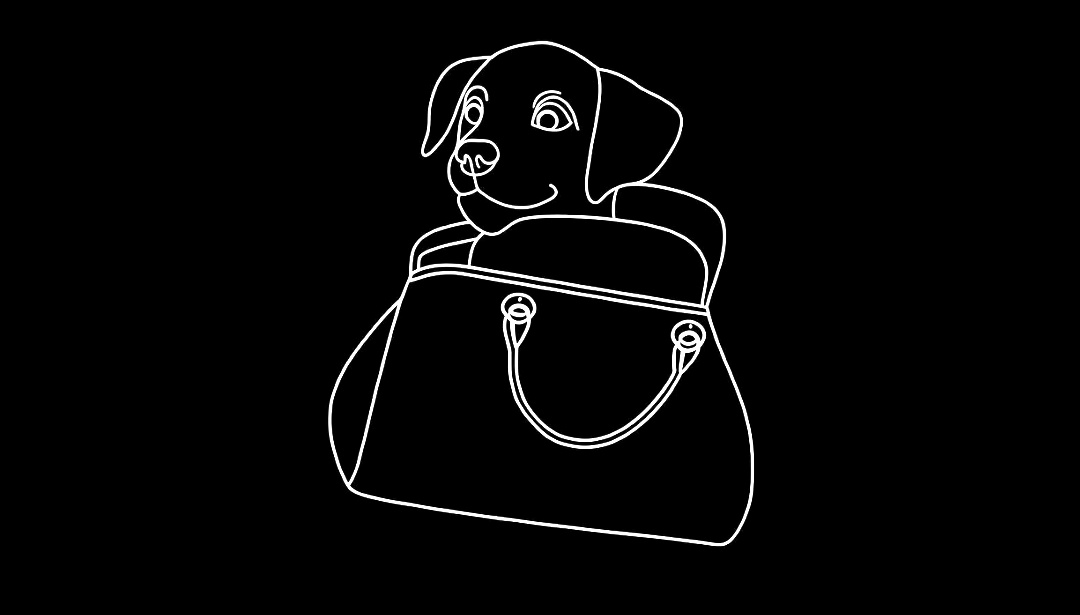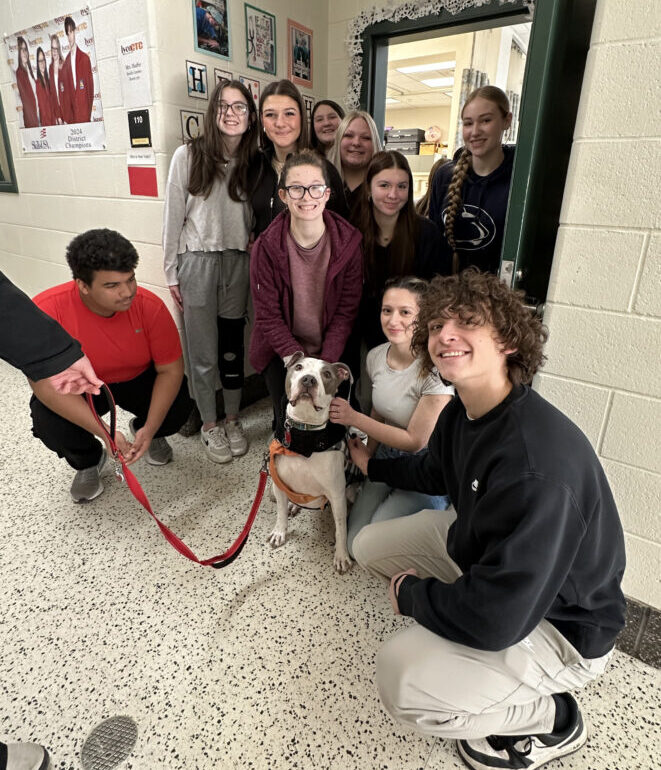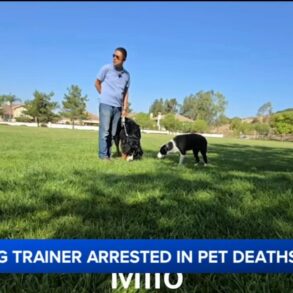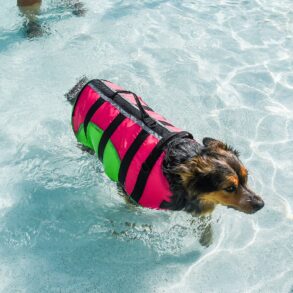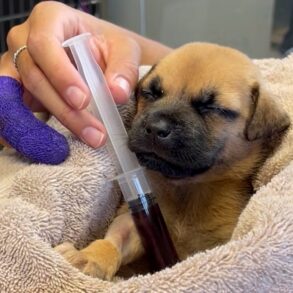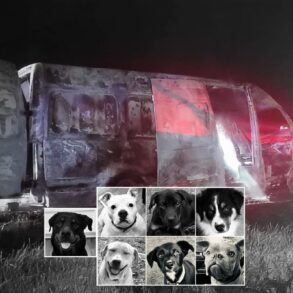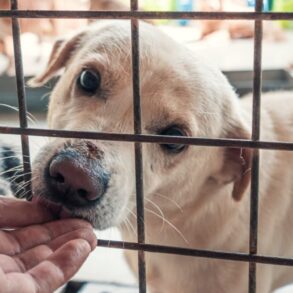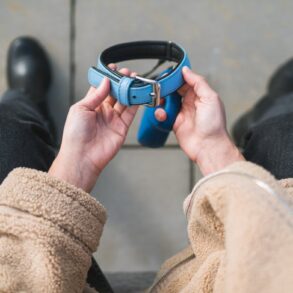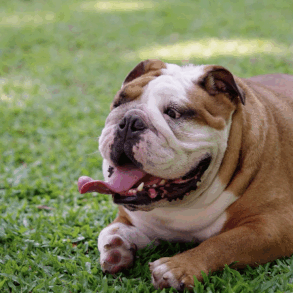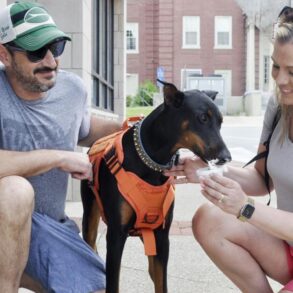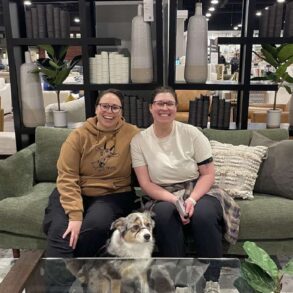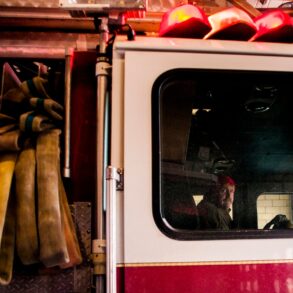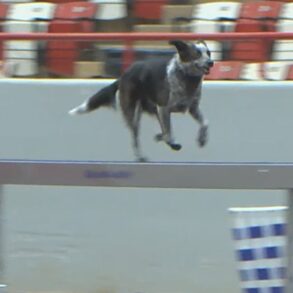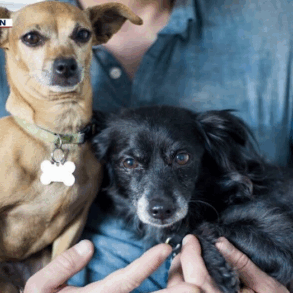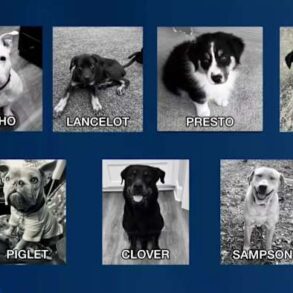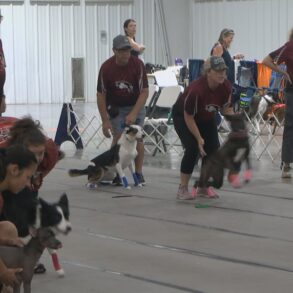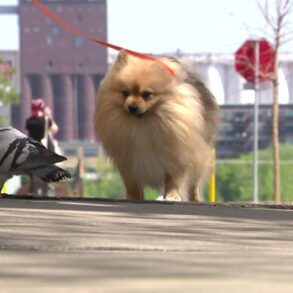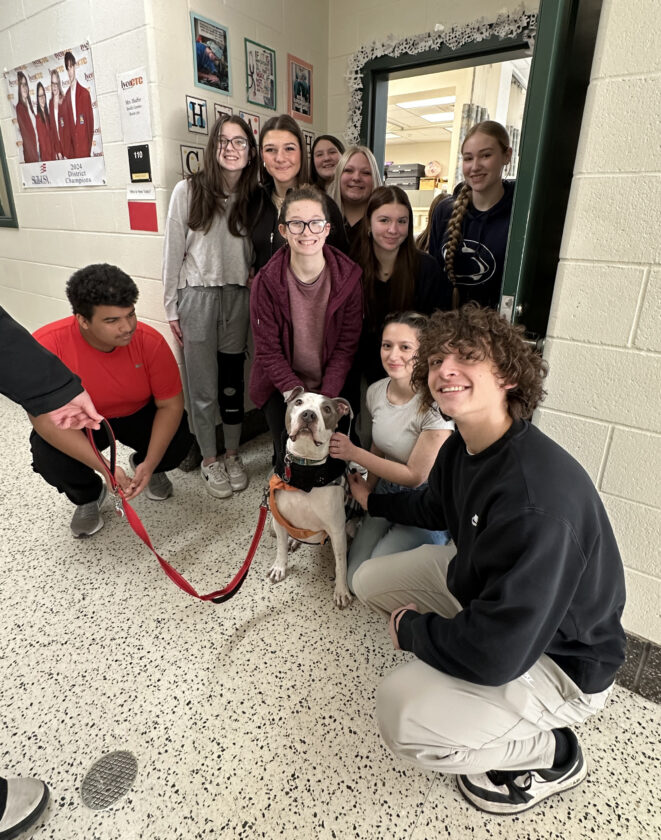
PHOTO PROVIDED
Therapy dog “Milo” is greeted by students of Lycoming Career and Technology School in Hughesville.
HUGHESVILLE — There’s a new student at LycoCTC (Lycoming Career and Technology Center) and he is fast becoming the most popular student in the building and yet he’s not quite six years old.
Milo, a pit bull terrier mix, has joined the group at Lyco as a therapy dog. Along with his owner and handler, Monica McCarty, Milo spends time with the students bringing a calming influence.
McCarty, who is a counselor at the school, shared that she decided when she bought her home she wanted a dog. She also knew that she wanted a therapy dog.
“There’s a lot of research to support the effectiveness of therapy dogs and the positive impact that they can have in schools. I knew the dog that I adopted was going to be a therapy dog. We were going to get trained together,” she said.
“The SPCA has an enclosure in the back where they’ll bring the dog in. So they brought him in. We did not come to meet Milo-my kids and I came to meet another dog. And after that one was done, one of the staff members said, Hey, we have another dog. Maybe you might want to meet him. And he ran into the enclosure and peed on my purse that was sitting next to me on the ground. And I thought, all right, well, dogs mark their territory by doing that, so I guess that means he thinks I’m his,” McCarty said.
“He’s just wonderful. He’s been an amazing addition. And so I adopted him from the very beginning, knowing that I was going to turn him into a therapy dog. That we were going to become a team together,” she added.
In order for Milo to become a therapy dog, they have to pass three evaluations by the Alliance of Therapy Dogs. Two have to be done in medical facilities and the other can be done anywhere. Milo’s third evaluation was done at the Tractor Supply Store.
“Basically what it is, is that the Alliance of Therapy Dogs’ evaluator watches him and how I interact with him. Does he take correction well, how well does he respond to strangers petting him? So the medical facilities where we went were nursing homes,” McCarty said.
She took Milo around to residents’ rooms and asked if they wanted to visit with him. There were also other dogs there, so he was evaluated on how well he interacted with them.
At the Tractor Supply Store Milo was watched to see how he reacted with random strangers.
Additionally McCarty did a series of American Kennel Club classes with Milo at Paw and Hand Obedience at Muncy.
“We did individual one-on-one lessons with the owner there, and then we did good citizen training, and so he’s AKC good citizen certified, and he’s AKC community canine certified. So and actually the community dog certification, we failed the test the first time. There’s a lot of they do it on purpose, a lot of distractions, because it’s a community based test. So people are squeaking squeakers, and there’s other dogs walking around, and he has to respond to commands. There’s noises like paper bags being shaken…and he just was not focused on me. We didn’t do well, so we went back and took a couple more lessons, and then retested and he passed with flying colors,” she said.
It took Milo about 18 months with all the classes and practices and then the finals before he and McCarty were certified as a pet therapy team. Milo was then ready for school.
LycoCTC is not the only school in the area which has begun using therapy dogs, but it was something new at Lyco so Nate Minium, director, went to a conference to learn more about what that might entail.
“There was another career and technical education center who had brought in and adopted some policy and had brought in their therapy dog for about a year. So, you know, we just kind of picked up some pointers and some tips from that director, and got some policy in our hands and met with our superintendents and shared the ideas and the plan to bring the therapy dog in. Got our board up to speed on that and approved the policy, and we started working on what it would look like to have Milo in,” Minium explained.
Before Milo’s first day of school Minium and McCarty met with the students in each of their classrooms.
“I think they were excited in anticipating for him to be here, but I noticed as they came down through the hallway, they saw Milo about midway through the hallway, as they got closer, they got quieter, even if they weren’t going to interact with him or pet him, but just his presence, the volume came down. It seemed and felt calmer as they went to class that day,” he said.
McCarty attributed how they introduced Milo for the positive reception he has received from the students.
“We went to every classroom every session. I had some pictures. We talked about the pit bull breed, having very negative stereotypes,” McCarty said.
Adopting that particular breed had been intentional on her part, she said, because she wanted to show that “there’s no bad dogs, just bad owners.”
Additionally, Milo has a lot of environmental allergies, so he was considered a difficult to adopt dog.
“Because of the allergies, I have to be really careful about what he eats and what’s in his environment,” she sadi.
“So we went around to all of the students and said to them, you know, there’s three things you have to remember when you interact with Milo. The first is no treats and no toys. All of that comes from me, because he’s got food allergies, he’s got environmental allergies. So that was, that was number one. Number two was, don’t put your face down into his face, because you’re a stranger to a dog. That’s just good human to dog behavior. And then the last thing was, be careful around his ears, because he gets ear infections as part of his allergies because you don’t know where he might be extra like you might hurt him unintentionally,” she said.
McCarty shared that she has heard the students reminding each other about the rules for interacting with Milo.
“I hear them talking to each other about how to interact well with him, and take good care of him, which is, like, that’s just right to the heart,” she said.
“They listened. You know, people say lots of things about kids these days, and I don’t see it working at a place like this. I watch them come together, and even the ones that don’t want to interact with him will correct one another,” she said.
Milo spends about two to three days a week at the school. There are also some of the shops, such as automotive technology, where she doesn’t take Milo because of chemicals that are used there.
“There are some places where he just doesn’t go and we don’t come in uninvited, because we don’t want to be disruptive to the education that’s going on. But it’s been great. Teachers have poked their heads out seeing me walk by. Hey, we’re taking a break. Can you bring Milo in? Absolutely sure,” she said.
“The day we went in and talked to the students, the Health Careers classroom was having a medical terminology exam the following day, which was Milo’s first day. So the students were like, we’re gonna need to see Milo, when they had the exams coming up…he’ll help calm us down,” Minium said.
“So they’re already thinking, like he can help with reducing some stress and getting us focused on what we need to do. So it was neat to hear the students talk about that,” he added.
Since the pandemic, there has been a lot of discussion on how that affected students emotionally, but McCarty said that the problems were on the rise before COVID shut down classrooms and placed students at a distance from each other.
“We cannot blame COVID for the mental health problems that exist with young people right now. It existed before COVID. It was on the rise before COVID. COVID was a catalyst for people to recognize it and for people to feel okay about talking about it. It was all happening beforehand,” she said.
“I’ve been in education and mental health and working with young people for 20 years. It was all happening before COVID, but people didn’t understand how to talk about it…to be fair, it’s tough to talk about. It definitely threw gas on the flames-COVID did-but it existed long before,” she said.
She has noticed that students who come to her office, just absent-mindedly pet Milo while they’re talking to her. Students in the hallways tell her stories and want to show her pictures of their dogs.
“So those connections, even though you may not look at that and go, that’s directly mental health related, she’s providing a mental health service, that community building that happens, and that interaction that I get to have with a student…oh show me a picture of your dog. Oh, what’s your dog’s name? That’s so cute. Or they’re like, oh, this dog reminds me of a dog that I used to have. All of that sort of community building makes it possible for a student who might need me later to go, that’s the nice lady with the dog. That’s Mrs. McCarty. I talked to her about my dog. I had some safe interactions with her, and now when I need her, I feel better about going to see her, whether he’s here or not,” she said.
“So he’s helping me make connections with students, learn students’ names, and have conversations with students who might just walk right by me when they get off the bus. Now they’ll stop and I get to go, okay, so you’re Leo, right? Okay, awesome, Leo, thanks for stopping and petting Milo, he’ll see you again tomorrow. I get to make those connections, which helps me then be able to reach out if there’s a kid who needs me,” she added.
“Monica talked about the connections-the community building-that’s something I think Lyco has always been for students, has been a place of community, of connecting with adults. We see our kids for two hours a day for three years, you’re making connections with students. So you know, having another layer to that, and having another two other staff members who specialize that’s her specialty, to look out for that and to help build community. It fits right into what we’re doing,” Minium said.
McCarty wanted to be clear that Milo is a therapy dog and not a service dog.
“A service dog is a one-on-one connection. That is a dog trained to assist a person with a disability. An emotional support animal is another one-on-one connection. That animal’s job is to provide comfort for one person,” she said.
“A therapy dog like Milo is trained to interact in a community setting. So whether it’s a medical facility, like a nursing home, or a school, a therapy dog’s job is to interact in public spaces with more people, like with lots of people at a time, and still be able to focus on me as the handler and behave appropriately,” she added.
This post was originally published on this site be sure to check out more of their content.
